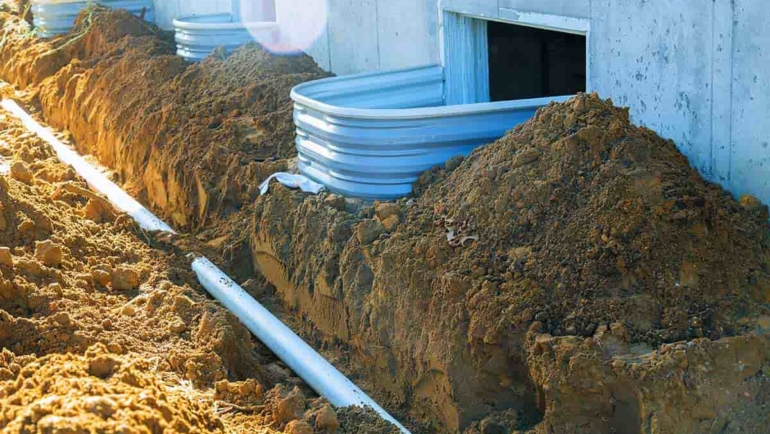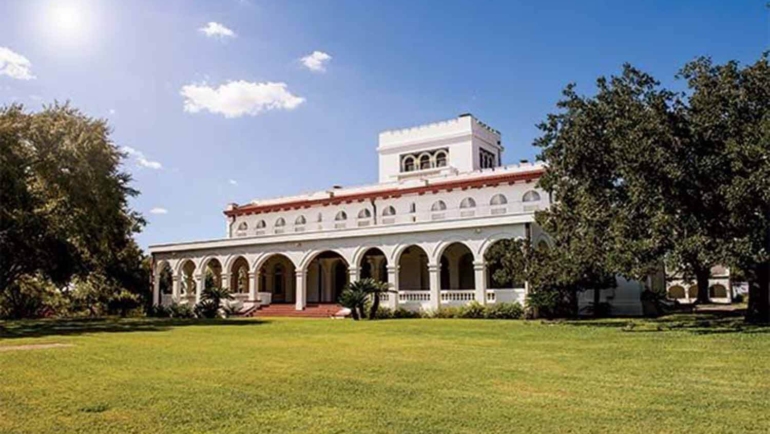If you were buying land in a smaller state then it might not matter what region of the state you look at, but that logic does not apply to Texas. While it is the second largest state in the United States, Texas has one of the most diverse ranges of ecosystems and population in the nation.
The three most prominent differences between buying land in south versus north Texas are the price per acre, the industries in each region, and the population density. South Texas is closer to the traditional image of rural ranches and small towns, while north Texas is booming with business.
These three factors can drastically change how the land you purchase functions, so learning all about them can help you decide which location is best for you. Read on to learn exactly how different south Texas land is from north Texas land and how these differences create two distinct regions within the state.
Article Contents
What’s the Difference between South and North Texas?
Analyzing the southernmost and northernmost parts of Texas is almost like looking at two completely different states. Texas as a whole is divided up into seven different regions, and south and north Texas are only two of those. Each region is distinguished by a unique ecosystem.
In south Texas the land is mostly made up of mesquite, Acacia, prickly pear cactus, and grassland. The soil is known to range from alkaline to slightly acidic clay and clay loams. Deeper soil beds support tall brush, mesquite, and spiny hackberry. Shorter caliche soils help anchor down dense brush.
South Texas rainfalls averages at about 20-32 inches of rain a year, with higher levels of rainfall favoring the western part of the region.
In north Texas you will find the terrain to be more full of rolling land or hills with patches of woodland. The land was once full of tall prairie grass, but that was soon replaced with an abundance of metropolitan areas.
North Texas soil is considered rich and fertile. It’s dark appearance actually helps coin a regional name: The Blackland Prairie. In the easternmost part of the area you run into the Oak Woods and Prairies region, characterised by acidic sandy loams and clays.
North Texas is also known for an abundance of lakes that are fantastic fishing spots. On top of this, north Texas averages more rainfall with about 26-40 inches per year.
What Major Cities are in South Texas?
The most popular (and populated) cities in south Texas are:
- San Antonio
- Corpus Christi
- Laredo
- Brownsville
- McAllen
South Texas is usually defined using these cities as its borders, with San Antonio being the northernmost and Laredo lying along the Rio Grande border. The majority of south Texas residents are bulked up in metropolitan areas like San Antonio, but they are also scattered in rural locations across the region.
What is Land in South Texas Used For?
Compared to other states, Texas has the highest density of ranches and farms. Unlike the metropolitan areas in north Texas, land in south Texas is primarily dedicated to crop production and livestock grazing.
Crop production makes up the majority of south Texas land use. The heat helps and lack of rain helps crops mature before insect pressure can become too much for them. Because Texas does not often have long periods of rain or cold weather, crops have ample opportunity to grow with minimal stress.
The fertile soils in south Texas contain high levels of calcium and other nutrients, which help with crop production.
3 Differences Between Buying Land in South vs North Texas
Deciding to buy land in Texas is an easy decision. Pretty much every industry you can imagine exists in Texas. The cost of living is low, and there is plenty of land to be bought. Pair that with their fairly consistent climate, and it is pretty clear why so many people are flocking to the state.
Looking past these state-encompassing reasons allows you to realize that not all land in Texas is equal. It is the second largest state in the United State, but Texas has one of the most diverse regions of any state. This is due in large part to its geographical location and its size.
When looking at south and north Texas the most distinguishing differences between the two regions are:
- Price per acre
- Industry
- Population density
When it comes down to it, these differences really highlight what splits the northern and southern parts of the state.These factors can make or break any commitment you have to purchasing land in a specific area, so it is important to learn the details.
Price Per Acre
If you are looking at the price per acre in the past five years you can see a clear difference between the two regions.
Overall, north Texas land costs more per acre than south Texas land. It does not matter whether you are shopping in Dallas, Fort Worth, Frisco, or Arlington. You can automatically expect to pay more for a city further north.
While both have price points that have slowly risen, north Texas land prices have a more sizable increase than the land prices in south Texas. Furthermore, open areas like the lower Rio Grande Valley have land prices that are both low and fluctuating.
For a clearer understanding of these changes in price, check out this table comparing price per acre in the Fort Worth Prairie, San Antonio, and Lower Rio Grande Valley from 2016-2020 using information from Texas A&M University’s Texas Real Estate Research Center:
| PROS | CONS |
|---|---|
| • Can have better financing options | • Can be overpriced due to seller sentimentality |
| • Ability to talk directly with seller | • Sellers can be too eager to oversell their land |
| • Better negotiation potential | • No guarantee that things have been done properly |
| • Are typically faster sales | • Tend to have more issues getting banks to finance |
Because money plays a huge part in any major purchase it is important to look at these trends, but know that they are changing all the time. A price that stands today could easily change by tomorrow.
Industry
While both north and south Texas have farming and livestock industries, each region handles them differently. While the industry in a region is always changing, Texas has held these steadily. This is largely due to the population density and the existing terrain of each area.
The open brush country of south Texas provides ample free space for livestock to graze, including mostly herds of cattle but also goats, llamas, sheep, swines, and horses. Even less popular livestock options like llamas and emus are fairly prevalent in the region. Agriculture is the largest industry in south Texas, growing crops such as:
- Sorghum
- Corn
- Citrus farms
- Most vegetables
- Rice (along the coastal area)
While north Texas’s fishing lakes have already been mentioned, south Texas’s expansive land offers ample opportunity for hunting. This could be native wildlife like quail or white tail deer, but there are also plenty of exotic hunting ranches in south Texas that give people the opportunity to pursue non-native creatures like:
- Axis deer
- Gemsbok
- Nubian Ibex
- Zebra
North Texas is more focused on industry, and housing, business, and roadway growth has been significant. In 2019, Texas had 42 Fortune 1000 businesses headquartered in the Dallas Fort Worth region alone. On top of this, the region ranked third in the nation for most Fortune 500 headquarters. Popular names include:
- Exxon Mobil
- Kimberly-Clark
- Southwest Airlines
- Fossil Group
Even when there is a ranch or farm in north Texas, it tends to be located on smaller acreage. In the Dallas Fort Worth area there is a heavier presence of things like wineries, cherry farms, elk, and organic beef. North Texas industries cater to a population that is more urban and has a different set of values and traditions. A lot of the agricultural centers also double as entertainment venues.
For example, a winery functions by growing wine grapes and processing them, but another aspect of their business is hosting festivals or getaways. Farms may double as tourist attractions, and they will optimize their land for both production and agritainment.
Population Density
While population density does not take much to explain, it is probably the most distinguishing difference between the two regions. Texas is the second largest state in the nation and it also has the second largest state population in the country.
South Texas covers a total of 52,964 square miles and includes 47 different counties. Considering a population of 4,710,347 residents, that gives south Texas a population density of 88.9 people per square mile.
North Texas covers an area of land less than half of south Texas: 24,535 square miles. Within its 30 counties resides 6,956,039 citizens. This gives north Texas a population density of 283.5 people per square mile.
The largest metropolitan area in north Texas is the Dallas Fort Worth area. In fact, Dallas Fort Worth ranks in the top five metropolitan areas across the nation. Even if you break it down into smaller areas, both the Dallas-Plano-Irving Division and Fort Worth-Arlington division still boast a greater population than the San Antonio metropolitan area.
The population of Texas is booming regardless of the region. According to the US Census Bureau, of the top 15 fastest growing large cities in the United States (large meaning an initial population of over 50,000) 6 are Texas cities. Texas also takes up three of the top five spots, with Frisco in the lead for the nation.
When you look at these numbers it becomes clear that the land in north Texas is chock full of people, while land in south Texas is more vacant. While there is plenty of land in Texas, the availability will go down and prices will go up as more flock to the Lone Star State.
Conclusion
In south Texas you get more of the traditional Texas experience. There are less people, and they are spread out across more land. While there are some cities, like San Antonio, most of the south Texas land is left to farming and ranching.
North Texas is full of rich metropolitan areas like Dallas Fort Worth, but there are still agricultural ties to Texas tradition. Because of the dense population, north Texas land is more expensive and better suited to smaller scaled ranches, farms, or other businesses.
It is not like purchasing land in another state where the environment is generally the same; Texas covers an expansive area and has a lot to offer in different parts. Buying land in Texas is a safe investment either way, but taking the time to decide which area of Texas to buy land in will ensure that you get the most out of your purchase.



